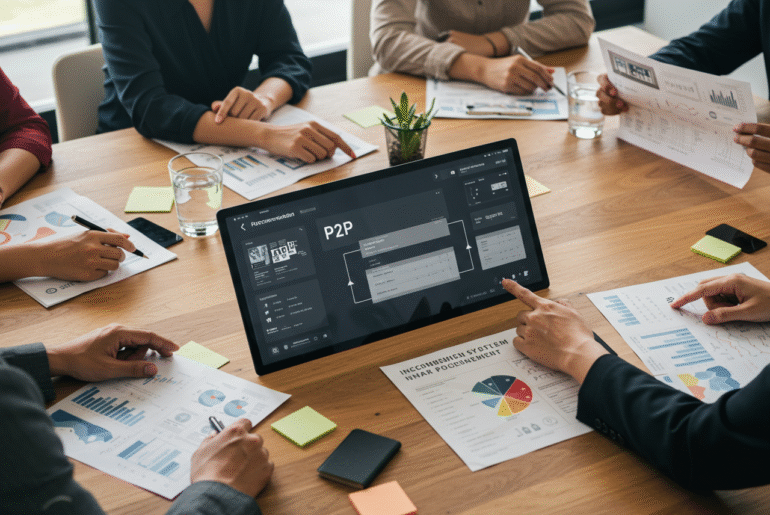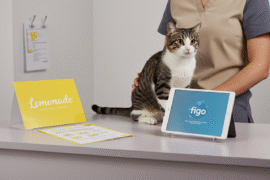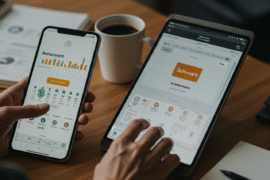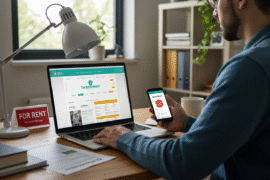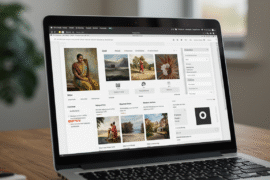This article may contain references to products or services from one or more of our advertisers or partners. We may receive compensation when you click on links to those products or services. Nonetheless, our opinions are our own.
- Main Points of the Procure-to-Pay Workflow
- Introduction
- Procure-to-Pay (P2P) Process Flow
- What Procure to Pay Means
- Common Terms Used in Procure-to-Pay
- Why Procure-to-Pay Is Important for Businesses
- P2P’s Role in Financial Planning
- Benefits of Using P2P Systems
- Getting Started With Procure to Pay
- What You Need to Launch a P2P System
- Challenges That Come With Starting P2P
- How the Procure-to-Pay Process Works
- Final Thoughts
- Frequently Asked Questions
- Recommended Reads
Main Points of the Procure-to-Pay Workflow
- The procure-to-pay (P2P) process is a major buying method that covers every step from asking for something to paying the final bill. It helps companies manage buying in a better way.
- P2P has main steps. These include making a buy order, handling bills, getting the goods, dealing with suppliers, and paying what is due.
- A good P2P setup helps companies save money, makes things run smoother, and helps them follow their own buying rules.
- Companies get help with building better connections with suppliers, keep cash flow under better watch, and better know where and how they are spending money.
- Using automation and new digital tools is now changing the way people buy and pay so that things work faster and smoother for everyone.
Introduction
Procure to pay (P2P) is an important part of procurement management. It handles the whole process. This starts when you find out what the supply chain needs. It ends when the last payment is made. This process is needed for every business. It helps make work easier by cutting out many manual tasks. It also makes sure that you follow all procurement rules and policies.
Through P2P, organizations can get goods in an easier and faster way. It helps teams that order these goods do their job better and also helps the finance team work together with other groups in the company. As more businesses move to digital systems, P2P lets them keep a close watch on costs and manage suppliers well. This helps businesses use their money in a smart way and do better than others.
Procure-to-Pay (P2P) Process Flow
The procure-to-pay (P2P) process has several steps. These steps connect the parts of a company that buy things with the parts that handle money. It helps to make supplier relationships better. The process starts when someone makes a formal request to buy something. Next, a purchase order gets created. Then, they process the invoice, and finally, payment is made.
Adding digital tools at these steps helps cut down on manual work and makes it easier to follow company rules. This leads to better cash flow and big savings on costs.
Bringing ERP systems into the buying process helps teams see how money is being spent. This gives all departments a better way to work together and makes their buying steps easier.
What Procure to Pay Means
Procure to Pay (P2P), sometimes known as purchase-to-pay, covers the whole buying process in a company. This process begins when the business finds a need for something. It goes through making a request, working with suppliers, getting the goods, checking and approving the invoice, and making the last payment.
The P2P process brings together teams like finance, supply chain, and procurement. This helps everyone follow the right buying rules and manage costs. The process makes it easier to handle buying and ordering. It also helps build better ties with suppliers and keeps the cash flow strong.
Today, many companies use digital P2P solutions to cut down problems that come from doing things by hand or using old tools. These systems help make buying goods and services better by giving more details about how the company spends money. They also help people make the most of deals the company has made and help save money. This makes P2P important for any business that wants to grow in a good way over time.
Common Terms Used in Procure-to-Pay
The procure-to-pay process has several main ideas and words that help make the buying process work well.
- Purchase requisition: The people in charge of getting things for the company send in this formal request when they need certain goods or services.
- Purchase order: This is a document given to those who supply the goods or services. It sets out the terms for what they will give and what the company will get.
- Goods receipt: The receiving team checks to see that the items that arrive match the original purchase request and what the supplier offered.
- Invoice approval: In this step, the company looks at the invoice, the order, and the goods receipt. They need to see that all these match up before paying.
- Vendor management: This is making sure suppliers do what they promise in their contracts, follow the terms, and deliver everything at the right time.
You need to understand these important parts to make procurement cycles better. This helps lower human mistakes. It also shows ways to save money.
Why Procure-to-Pay Is Important for Businesses
The procure-to-pay process is important for any business. It covers how the company gets products or services and then pays for them. A good process can help you have better control over spending. The business will not waste money and can save time too. This way, you know what you buy, how much you spend, and where the money goes. A clear and smooth procure-to-pay process keeps the business steady and helps it grow.
Procure to pay (P2P) is important for businesses that want good buying management, less spending, and to follow company rules. When you match how you buy things with the big goals of the company, it helps you get the products and services you need in a clear and easy way.
A strong P2P system helps people get a better view of spending habits and supplier ties. When the team uses digital tools, it makes buying things easier. It also helps the company follow rules, make fewer mistakes, and keep the supply chain steady. This lets companies buy what they need in less time and makes sure things run well for a long time.
P2P’s Role in Financial Planning
Procure to Pay is important in keeping the money side of things in check. It helps teams who handle money to keep track of cash and see that invoices are looked at and paid on time.
When you join P2P with ERP systems, it gives you real-time updates about where the money is going. This helps top management make good budget plans. This setup cuts down on spending that should not happen and makes sure every payment follows the company’s buying rules.
Also, the last payment step gives major money details for checking. This helps raise accountability and keeps clear and open money records.
Benefits of Using P2P Systems
A good P2P system can give your business many benefits. It helps you manage buying things and makes work go smoother. Here are some of the benefits:
- Cost savings: Smart buying helps cut costs and get more value in talks with suppliers.
- Digital transformation: Automation tools help speed up paying bills, take out manual mistakes, and make sure rules are followed.
- Improved supplier relationships: On-time payments and good contract handling help build strong supplier partnerships.
- Best practices adherence: Well-planned steps help you follow good rules, meet needed laws, and keep the right records.
These benefits show why using a P2P system is key. It helps with smooth work and planning for buying things in a smart way.
Getting Started With Procure to Pay
Here is a simple start to the procure-to-pay process. This process is about how you find, order, and pay for what your company needs. It covers each step, starting from picking the items all the way to the payment stage. This will help you know what you should do at every point and explain how it works.
For groups that are just starting with procure to pay (P2P), building a strong buying team and giving them the right tools is the first thing to do. Putting modern tools for buying things at the top of your list helps change the way you buy and makes the whole process work better.
Software that works with ERP systems helps you see your buying rules, how you spend money, and how you work with suppliers. If you set up P2P from the start, it gives you helpful ideas that make it easier to plan how you buy things over time.
What You Need to Launch a P2P System
To set up a P2P process, you need three main things. You need good tools. You also need teams that work well together, and you must have trusted resources. A company can get:
- Procurement software: These new systems use automation for requests, purchase orders, and approving invoices. This helps cut down the work people have to do by hand.
- ERP systems: These are main platforms that bring together both money and buying tasks. They help make sure the way things work goes smoothly.
- Procurement data: Looking at past trends helps us follow rules and find ways to save money.
- Department leadership: Good talk between management and the buying team helps match goals and plans.
Using these tools and resources can help businesses improve the way they work. This makes things better and helps them do well.
Challenges That Come With Starting P2P
Moving to a P2P system can be hard for both people and teams who are getting used to new ways of working. There are some common problems they might face:
- Manual tasks: Activities like matching invoices by hand take a lot of time and slow down the way work flows.
- Outdated procurement solutions: Older tools may not have what you need to handle bigger supplier groups or large orders at once.
- Policy compliance: Sticking to procurement rules can be hard for new people who do not know the requirements well.
- Batch order management: Poor ways of handling big orders can cut savings and put stress on the link between you and your suppliers.
To deal with these challenges, you need full procurement solutions. These solutions help make work easier, support managing orders, allow for automation, and make it easier to follow rules.
How the Procure-to-Pay Process Works
The procure-to-pay process brings all the steps of getting things and paying for them into one simple flow. It starts with finding what is needed and ends with the last payment. When you set clear rules at every step, it helps make sure everyone is following them. This also helps the work go well.
Taking things step by step helps everyone understand the whole process. This will help to make sure that each part is done the right way and stays within company rules. It also helps supplier work to be good. When you make P2P workflows fit what your company needs, you get more cost savings. This will also make your supply chain management better.
1. Identifying Business Needs
The first step is to find out what goods or services are needed. The procurement team works with the different departments to make sure everyone knows the details, the money that is set aside, and the rules that must be followed.
Writing down the amount, delivery dates, and quality rules helps make sure everyone works toward the same goals in the company. When departments talk with each other in the right way, the whole buying process runs smoothly. This also makes it easier to work with suppliers and helps the company keep costs down.
2. Making and Approving Purchase Requests
Creating and approving purchase requisitions makes internal requests for buying things official. Requisitions have to go through approval steps to check if they fit the budget, follow procurement rules, and match the company’s goals.
Automation of approval workflows helps things move faster. It lowers the number of mistakes and helps things work better.
3. Sending Purchase Orders and Handling Suppliers
In this step, you send out purchase orders to your suppliers. This lets them know what you want to buy and when you need it. You should talk with each supplier to make sure they have the right items in stock and can deliver them on time. Keep in touch with them to handle any problems that may come up. This helps you get the best results for your business.
After the request is given the green light, the team makes purchase orders. They start working with the supplier. Purchase orders set up a legal deal. They list when things should be delivered. You will also find information about payment terms and what the product should be like.
Supplier management means keeping an eye on how each vendor does their job. You want to make sure they do what the contract says. Using tools that do work for you can help a lot. Automation makes it easy to take care of many vendors and handle several orders at once. This helps you adjust to changes, do the job well, and stick to the contract all at the same time.
4. Getting Goods or Services and Handling the Invoice
In this step, you get the goods or services that you ordered. After that, the invoice comes from the supplier. You need to check that the goods or services meet what was promised. Then, make sure the invoice is correct and matches what you got. If all is good, you can move forward with paying the invoice.
When the goods or services come in, the receiving department checks that they match the purchase order. They also make sure the quality meets the set standards.
Invoice processing comes next. It uses a three-way match with the purchase order, goods receipt, and invoice. This is to make sure everything lines up right and is correct each time.
| Document | Details |
|---|---|
| Purchase Order | Defines terms, quantities, and payment details. |
| Goods Receipt | Confirms delivered items match the purchase order. |
| Invoice | Details amounts owed for delivered goods or services. |
Doing this step helps make the process open and honest. It also makes the procurement feel more fair for everyone.
5. Making Payments and Record Keeping
The last step is to handle approved invoices and keep complete records. Payments are made by following the rules, so there is care and responsibility in every step, and everything is right.
Keeping good records of invoices, purchase orders, and vendor papers helps you later. You can look back at them anytime you need. This also helps plan for the future and make sure things get better in the buying process. Paying suppliers in the right way helps build trust. It also gives you good information to help you make choices in the future.
Final Thoughts
To sum up, knowing how the Procure to Pay (P2P) process works is important for businesses that want to make their work better and keep track of their money. A simple and clear way to buy things and pay for them helps cut down on mistakes, saves money, and builds good relationships with suppliers.
A good P2P system lets you see how money is spent and helps with cash flow. It also gives you helpful ideas to make better choices. If you buy the right tools and set up simple steps for everyone to follow, your team can fix problems well and make buying work better.
Frequently Asked Questions
What is the difference between p2p and procurement?
Procure to pay, or p2p, is about the steps where people buy things and pay for them. This includes asking for the things, making orders, and handling the payments. Procurement is the bigger process. It covers all steps, like picking suppliers, planning where things come from, making sure rules are followed, and watching over all buying work from start to end.
How does p2p software help businesses?
P2p software makes buying things and handling orders much easier. It does this by using simple tools to take care of requests, orders, and okaying bills. The software lets you see every step of each order as it happens. With that, work gets done faster. Reports are also easy to get and read. The software helps your company switch to new digital tools and ways of working.
What are the main steps in a typical p2p process?
The main steps in a normal p2p process are making a purchase request, sending a purchase order, checking if goods have been received, handling the invoice, and making the last payment. Each step helps you follow buying rules and makes working with suppliers better.
Can small businesses get something good from using a p2p system?
Yes, small businesses can save money, make better relationships with people they buy from, and make buying things easier by using digital p2p solutions. This setup lets their work grow and helps the business move forward.

Reviewed and edited by Albert Fang.
See a typo or want to suggest an edit/revision to the content? Use the contact us form to provide feedback.
At FangWallet, we value editorial integrity and open collaboration in curating quality content for readers to enjoy. Much appreciated for the assist.
Did you like our article and find it insightful? We encourage sharing the article link with family and friends to benefit as well - better yet, sharing on social media. Thank you for the support! 🍉
Article Title: What Is Procure To Pay (P2P) Process?
https://fangwallet.com/2025/07/07/what-is-procure-to-pay-p2p-process/The FangWallet Promise
FangWallet is an editorially independent resource - founded on breaking down challenging financial concepts for anyone to understand since 2014. While we adhere to editorial integrity, note that this post may contain references to products from our partners.
The FangWallet promise is always to have your best interest in mind and be transparent and honest about the financial picture.
Become an Insider

Subscribe to get a free daily budget planner printable to help get your money on track!
Make passive money the right way. No spam.
Editorial Disclaimer: The editorial content on this page is not provided by any of the companies mentioned. The opinions expressed here are the author's alone.
The content of this website is for informational purposes only and does not represent investment advice, or an offer or solicitation to buy or sell any security, investment, or product. Investors are encouraged to do their own due diligence, and, if necessary, consult professional advising before making any investment decisions. Investing involves a high degree of risk, and financial losses may occur including the potential loss of principal.
Source Citation References:
+ Inspo
There are no additional citations or references to note for this article at this time.
